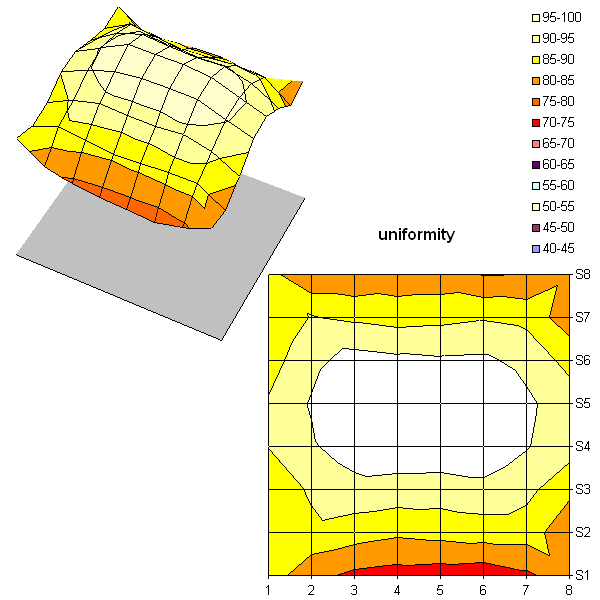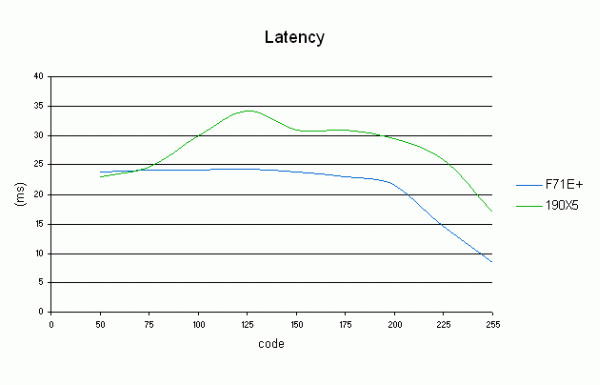Can 19" LCDs Pass the Frag Test?
Spatial Uniformity
The uniformity of the 190X5 is within the average. The values are distributed over 20% of the total range. Again the lower part of the panel appears less bright than the upper part, but that doesn't really affect using the monitor.
Up until now, the 190X5 has our vote in the category of TN LCD monitors for gaming. The black level is deep; the calibration is satisfactory despite a certain lack of color fidelity in the dark shades, but it's better than on the other monitors if you make the comparison at equal brightness levels. So, the static qualities of the 190X5 are very good.
Philips 190X5's Responsiveness
Like the other monitors using the Philips panel, the 190X5 is fast.
Here again we can see the characteristic shape we've already seen with the preceding two monitors. Once again, variations in the panel fabrication process have to be taken into account, but this is a fast panel, there's no doubt about it.
However, the Philips panels have trouble achieving response times of 15 ms and 16 ms. You have to wonder what test procedures they use to come up with their claims of 12ms. True, it doesn't make these bad panels, but it makes you wonder - especially since that 12ms figure has been repeated several times and about several panels. It's easy to understand NEC's conservative specification of 16ms rather than 12 ms.
Get Tom's Hardware's best news and in-depth reviews, straight to your inbox.
Current page: Spatial Uniformity
Prev Page Philips 190X5's Electronics Make The Difference Next Page In Practice
